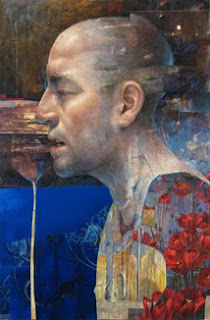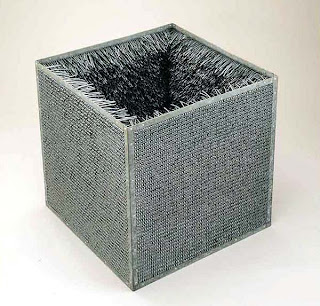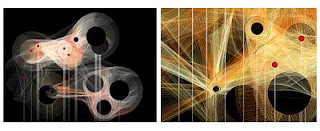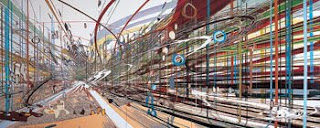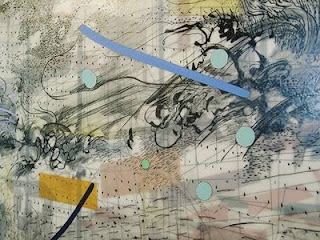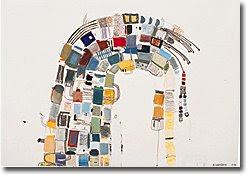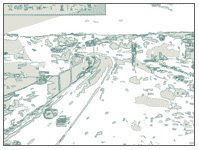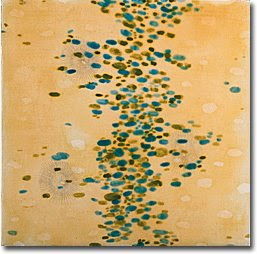
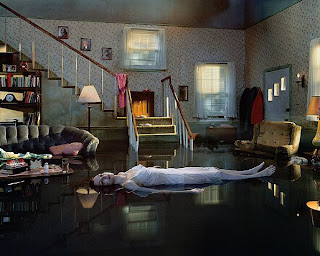
I really admire Gregory Crewdson's work. He creates such an amazing atmosphere and sense of mystery that really brings into question the human condition. Here is an excerpt from an interview on
kultureflash.netGregory Crewdson photographs memories of things that never happened. His images replicate what emerges when a child's mind edits the jumble of new and confusing personal experiences it encounters. As children, we unconsciously focus on unremarkable or inconsequential moments and freeze them out of context. As adults, these remembered moments become emblematic of our childhood. Thus, a grown-up might recall his sister turning her head toward the car window, without having any idea why she turned, or why he remembers that image when countless similar gestures have been forgotten. For most of us, such memories are precious because they are vivid and scarce, but for some, these frozen moments can be chilling mysteries, less emblematic than enigmatic. Children often do not understand what they are witnessing when they see their parents fight or feel unexpressed tensions in a room, but the scenes they recall might germinate in their subconscious and grow into nightmares that serve as clues to their adult personalities, fears and desires. Like a child trying to make sense of glimpses of banal, adult misery, Crewdson crafts cryptic, dark fairy tales. His primary series of photographs, Hover (1996 - 97), Twilight (1998 - 2000) and Beneath the Roses (2002 - 05), are loaded with cinematic references and filmed on Hollywood-scale sets with Hollywood-sized budgets. Yet what they depict are personal responses to moments too fleeting too remember and too overwhelming to forget.
KULTUREFLASH INTERVIEW
This interview was conducted via the phone on 22/04/05.
Ana Finel Honigman: Your photographs have been described by others as cinematic. If you were to categorize your work as being in any genre, which genre would it be?
Gregory Crewdson: I would never categorize my work in a genre.
AFH: Not horror?
GC: Definitely not horror. Though I am a fan of horror, I would not claim to be an aficionado of the horror genre.
AFH: Is there any genre that has influenced you the most?
GC: I would say that I respond to the legacy of mainstream American movie making the strongest. I like story-tellers and particularly obsessive visionaries rather than genres. Would you like me to name a list of directors whose work I admire most?
AFH: Can I guess that Hitchcock would be on that list?
GC: Yes. How did you guess?!
AFH: Every time I see your photographs I am reminded of Marnie and Shadow Of A Doubt.
GC: I love that one. Did you know that was Hitchcock's favorite Hitchcock movie? I actually wrote a paper on Shadow Of A Doubt in college. I would say Shadow Of A Doubt has made an impact on me and my work, but I would also name Vertigo and Rear Window as influences.
AFH: Much has been made about the influence your father and his profession as a psychoanalyst has had on your work. Do you think you are responding to the Freudian motifs in Hitchcock?
GC: Definitely!
AFH: Who else?
GC: Orson Welles. I deeply admire his spatial sensibility and his operatic vision. I also have great respect for Cronenberg, who I consider an artist, who just happened to work at making horror films. I can relate to the way his obsessions emerge and re-emerge in his movies. You can never get away from your self as an artist or as a person. Invariably themes and issues always resurface and make themselves evident in some form or another. In Cronenberg's case, his obsessions and interests were fascinating enough to make some really arresting images.
AFH: I know you've said in the past that your pictures are moments without narratives, but as a viewer do you primarily remember films in still image or do you remember the stories?
GC: I almost exclusively remember through images. That is why I would make a truly terrible film-maker. I can not think in terms of continuity. I have no idea what happens before or after my images.
AFH: Can a single great image redeem a terrible film for you?
GC: In my mind there is no such thing as an uninteresting film. I am always seduced by the magic of the dark theatre and the flickering lights. I could watch any film. I am satisfied by the dream, the mirage, regardless of what it is telling me, though as a photographer, I am interested in single, pregnant moments.
AFH: Is it harder, now that your aesthetic and images are known, to find actors who can encounter your work fresh?
GC: I know what you mean.
AFH: You have said in the past that your photographs are almost psychological self-portraits. Do you feel vulnerable knowing your audience is potentially psychoanalyzing you?
GC: I am in my pictures but they are not directly autobiographical. They are quite different from someone like Nan Goldin's work in the way that they are not documenting actual events from my life…
AFH: I'm relieved to know that.
GC: Me too. My photographs come from a psychological place but there is a necessary separation between me and my work.
AFH: Is there a theoretical base to your images? Are you thinking of Freud or Zizek or someone else when you make them?
GC: No I'm not. I just think of an image in my mind and then begin figuring out how to create it like I would be figuring out a math problem. When I start, I am thinking about how I want to put all the elements together and get that man standing in the rain next to his car.
AFH: Are there other people you work with whose insight and issues might be readable in the final images?
GC: No. There is no one. I deal very closely with the communities when I film and with my production crew but I work in extreme privacy. Beneath the Roses took three years to make and before it was exhibited less than a handful of people ever saw it. I feel very secretive and almost protective of the work while making it but once all the decisions have been done and the photographs are ready to be shown then I almost feel detached from them. My role is to make pictures and then people respond to them.
AFH: What do you think of reviewers' interpretations of your work?
GC: I never read reviews.
AFH: Even though you do not have a particular narrative or explanation in mind, have you ever heard someone describe their interpretation of your image and thought they had it completely wrong?
GC: How can an opinion be wrong? They can be incredibly misguided…
AFH: But never wrong?
GC: Well, I know that my pictures provoke strong reactions. Because of what they are, how they look and how they were made I'm not really surprised when they get powerful responses.



